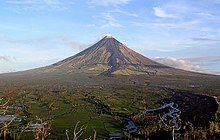
A nature park, or sometimes natural park, is a designation for a protected area by means of long-term land planning, sustainable resource management and limitation of agricultural and real estate developments. These valuable landscapes are preserved in their present ecological state and promoted for ecotourism purposes.
Contents
- International nature parks
- Nature parks by country
- Austria
- Belgium
- Croatia
- Czech Republic
- France
- Germany
- Hungary
- Italy
- Philippines
- Switzerland
- Spain
- See also
- Notes and references
- External links
In most countries nature parks are subject to legally regulated protection, which is part of their conservation laws.
In terms of level of protection, a category "Nature Park" is not the same as a "National Park", which is defined by the IUCN and its World Commission on Protected Areas as a category II protected area. A "Nature Park" designation, depending on local specifics, falls between category III and category VI according to IUCN categorization, in most cases closer to category VI.[ citation needed ] However some nature parks have later been turned into national parks.






